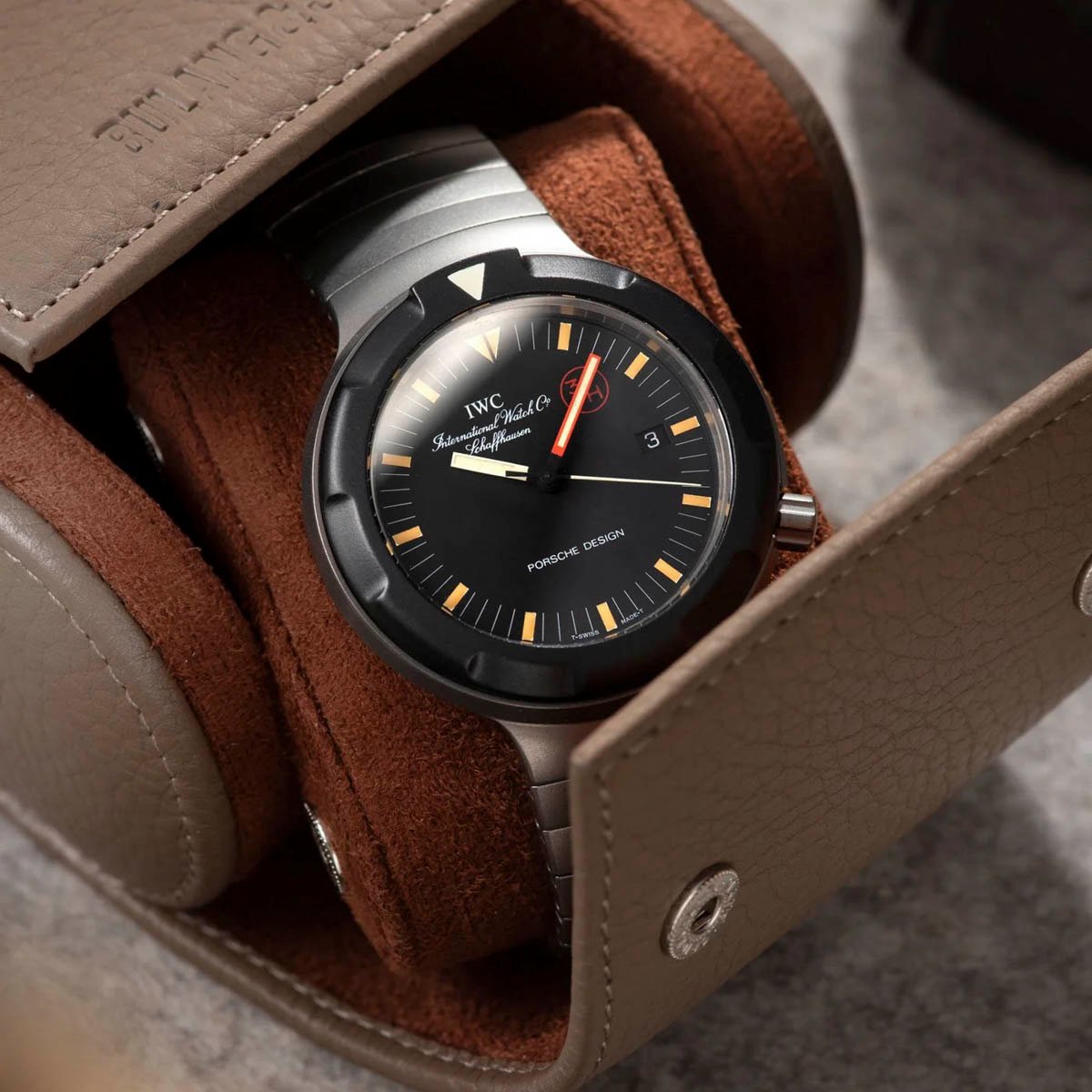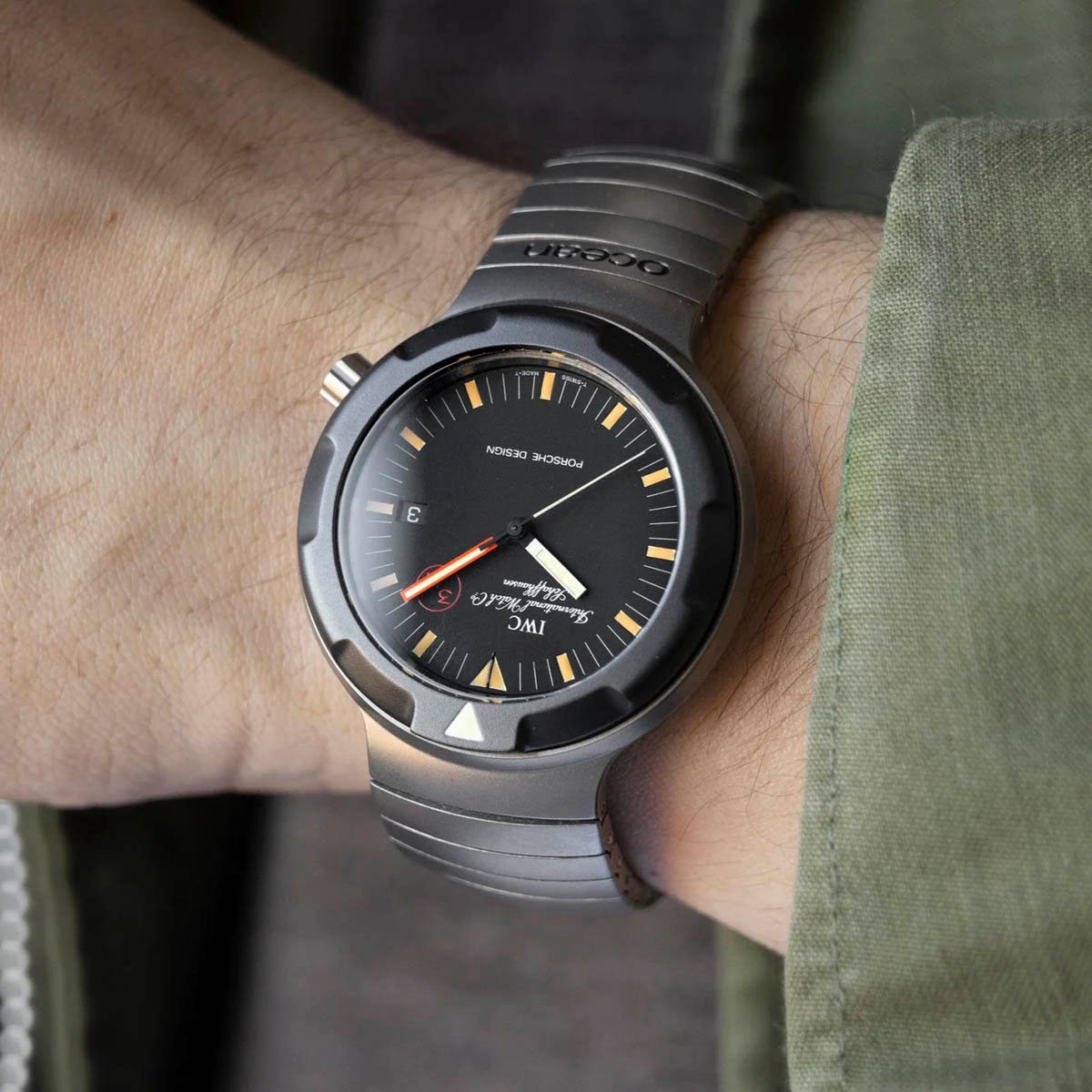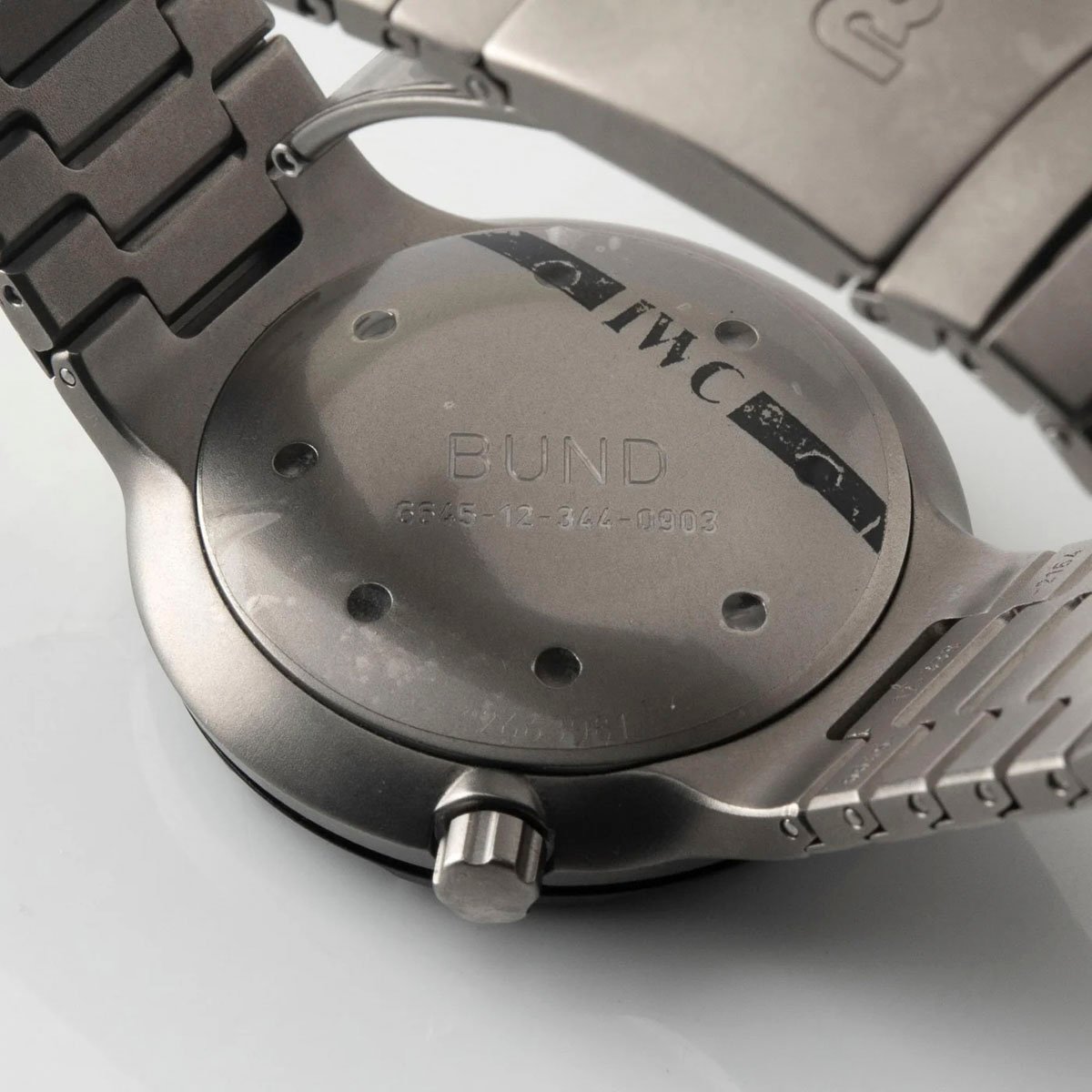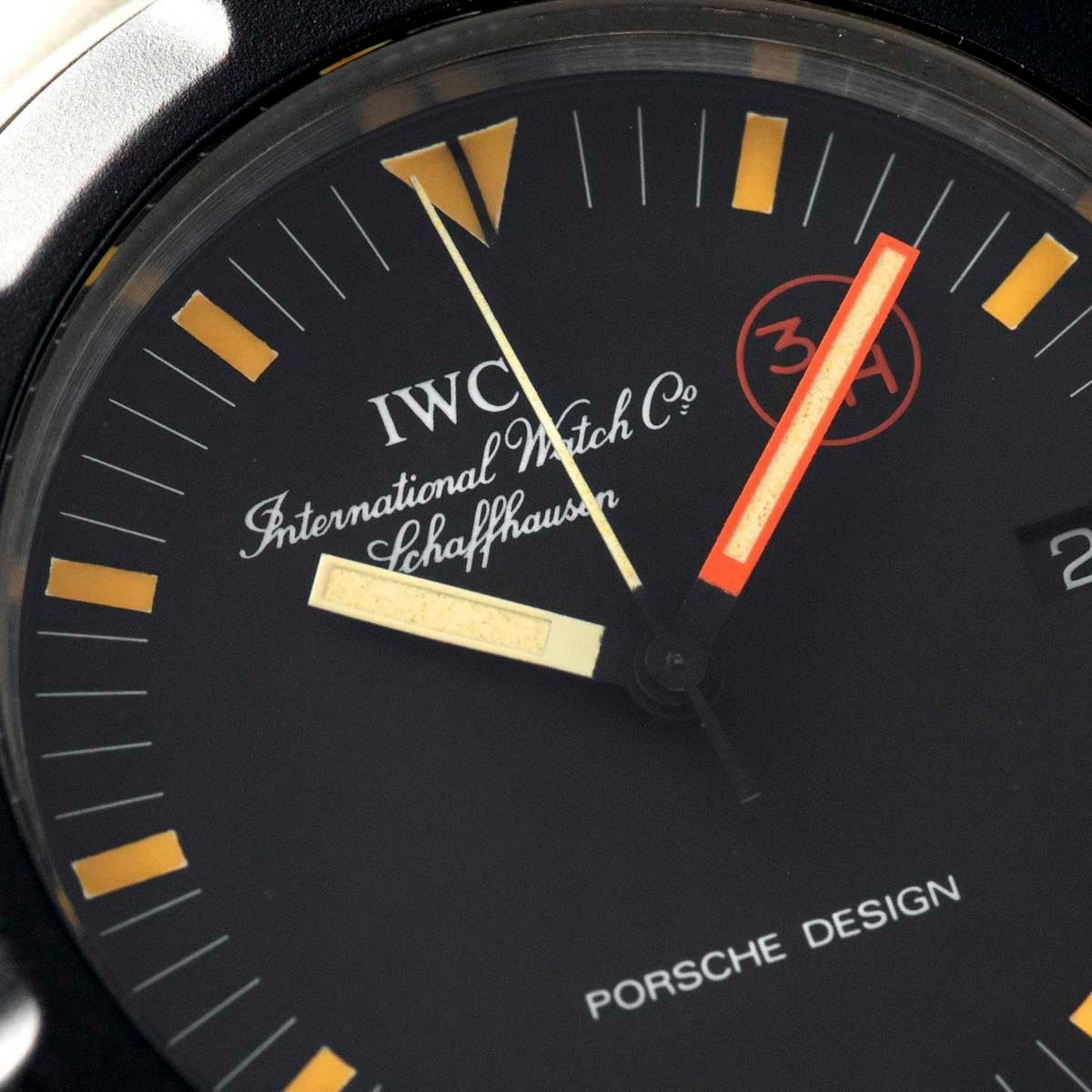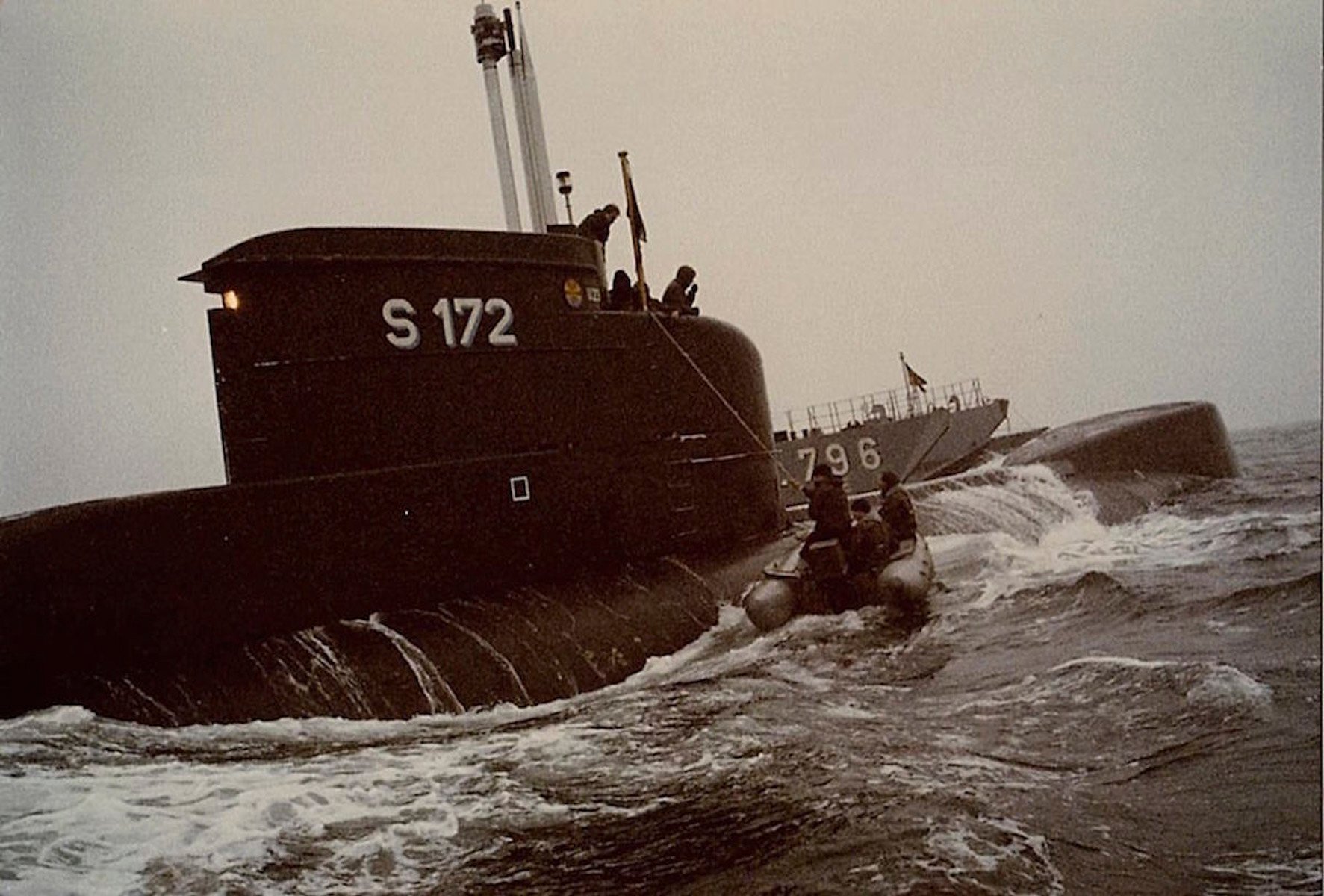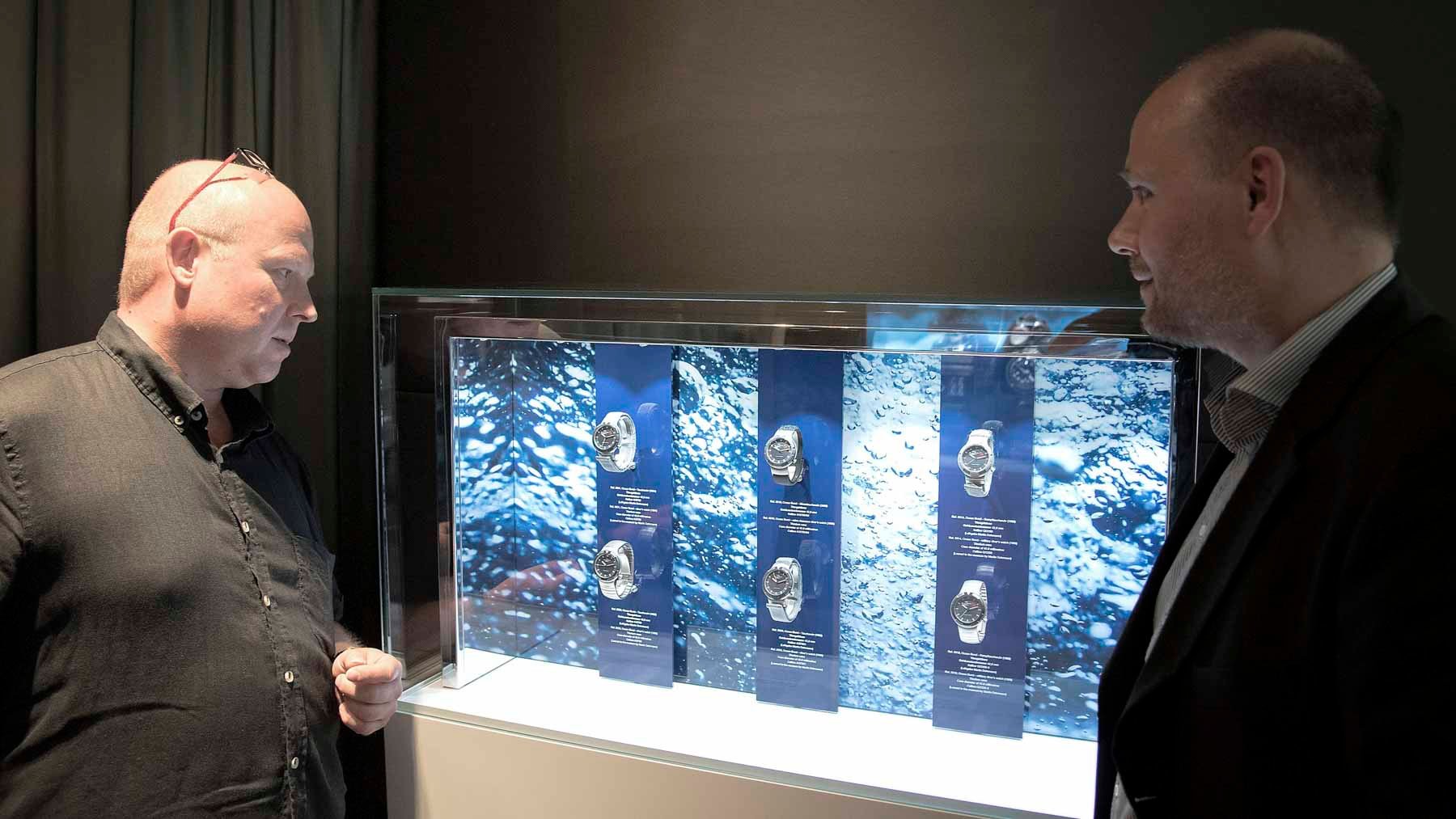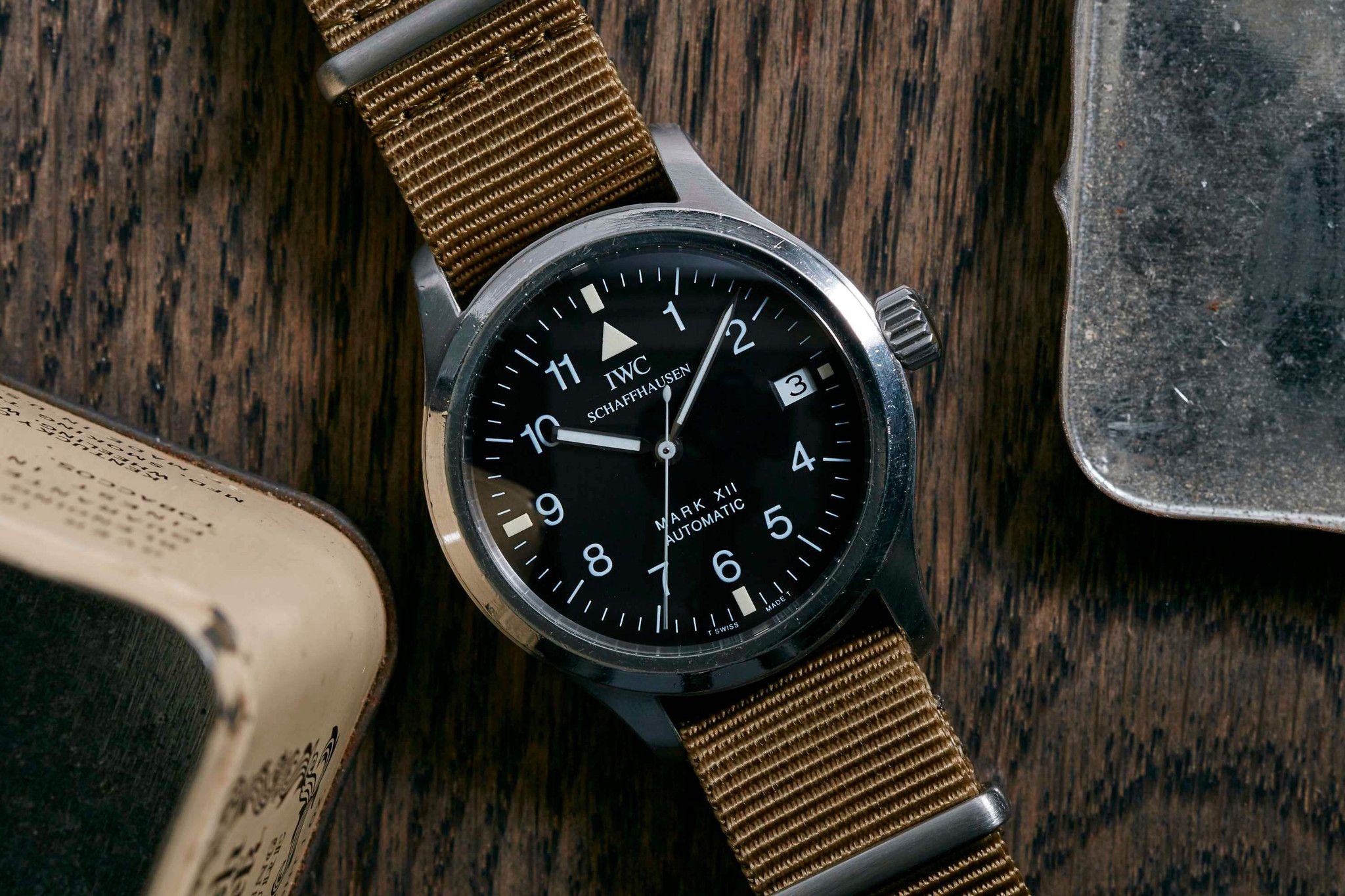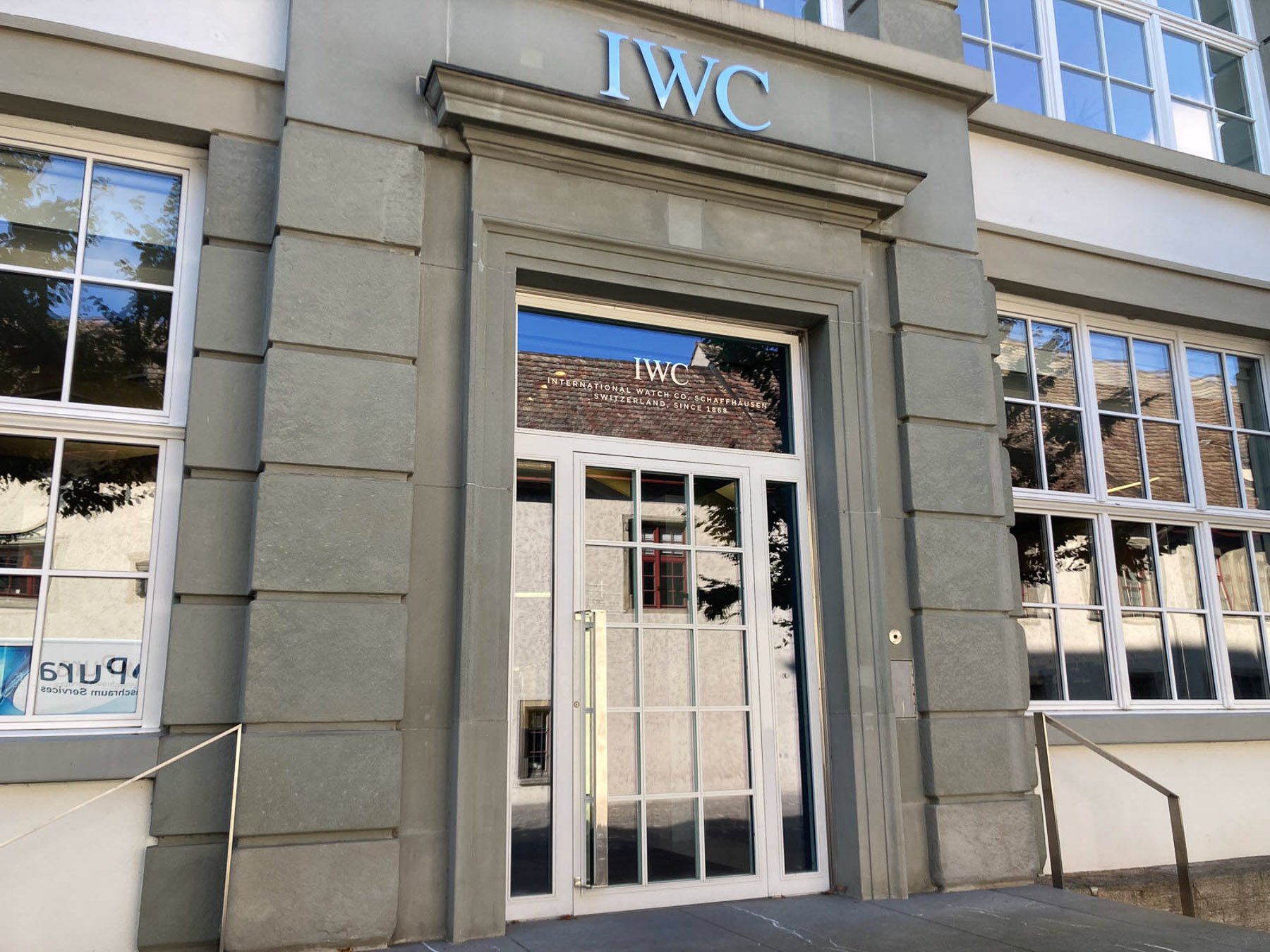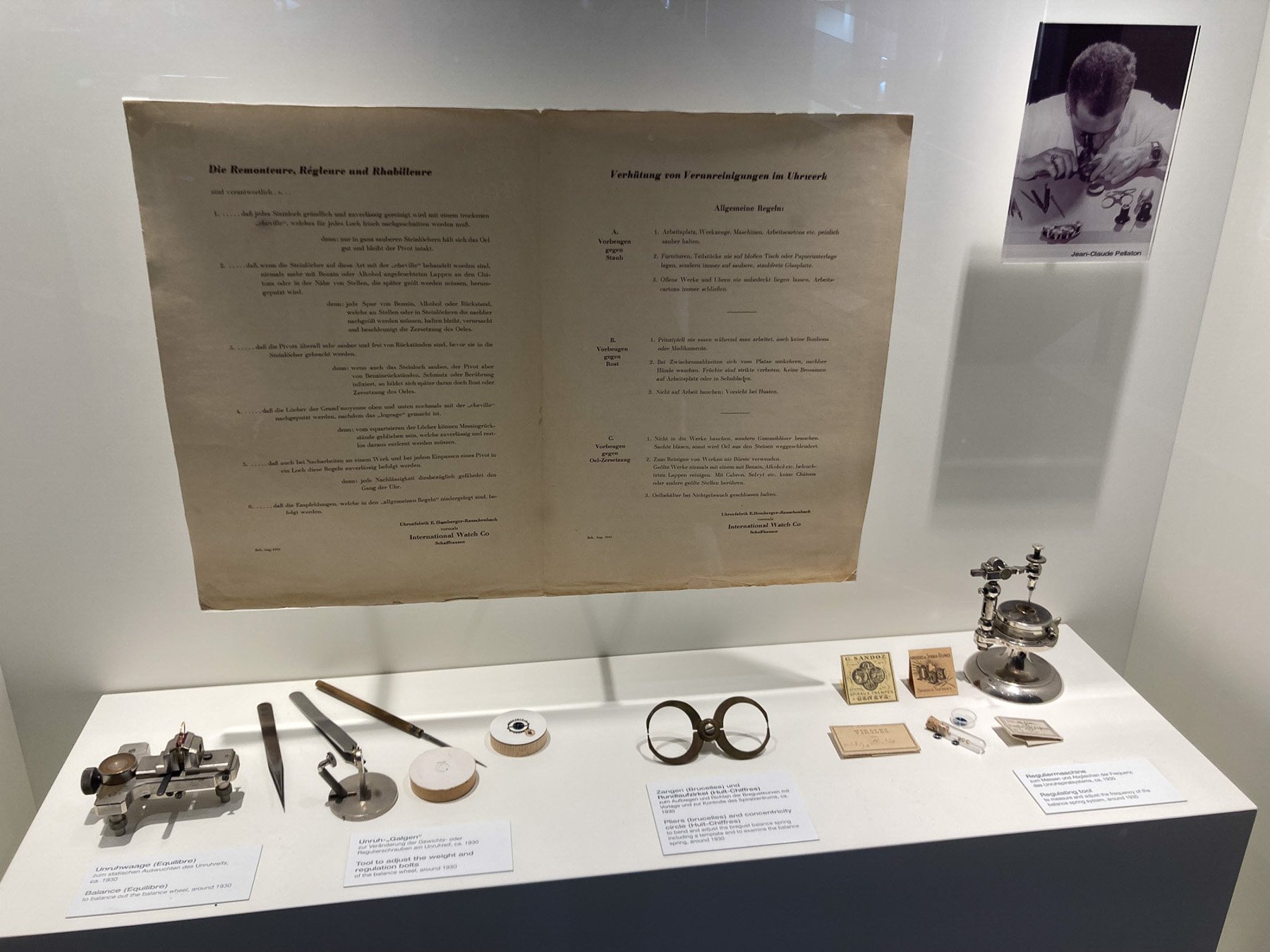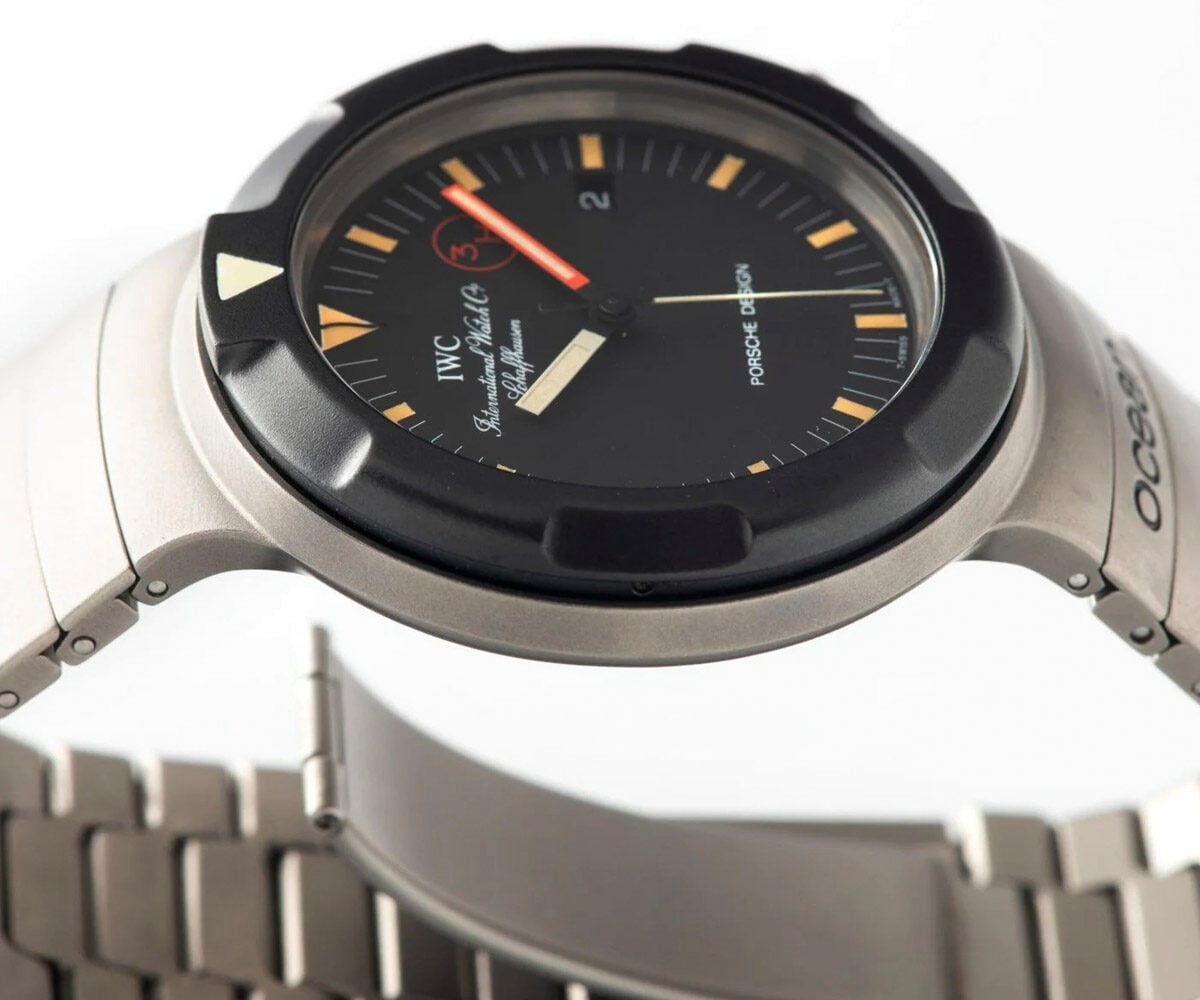The IWC Porsche Design Ocean Watches Issued To The Bundeswehr
Military-issued watches are fascinating to learn about. In this article, I’ll share my chat with IWC’s historian about one such watch, the Porsche-designed Ocean Bund.
The IWC Ocean Bund (short for Bundeswehr or “German Federal Armed Forces”) is one of those fascinating watches in history. It was a cutting-edge design at the time and an absolute beast of a watch meant to take a beating. It was issued to members of West Germany’s Kampfschwimmer (“Combat Swimmers”). These frogmen were among some of the country’s most elite and well-trained military units. Thanks to this wonderful post by Bulang & Sons, we can see some wonderful images of this rare watch.
The IWC Ocean Bund
Many of you know that I have a soft spot for International Watch Company (IWC) Schaffhausen. This is not just because of my family connection to Schaffhausen and a Caliber 89 manual-wind dress watch but also my father’s IWC Mark XV that he passed down to me.
My interest in vintage IWC has long been there. However, my interest in the Ocean Bund was sparked by an article on the brand’s website explaining how IWC historian David Seyffer helped host an exhibition of these special watches with a local European collector.
I did some digging and came across old Kampfschwimmer training videos from the 1980s. In them, I saw a distinct-looking watch strapped to their wrists. It has the unmistakable shape of the IWC Ocean Bund! You can see one of these training videos below.
The Kampfschwimmer engaged in all sorts of training. I’ve seen videos of them being parachuted out of planes with full diving gear, including fins already attached! I wanted to learn more about this specific part of history, so I was excited when I got to interview David Seyffer about this particular watch. Beneath is that interview, edited slightly for clarity and brevity.
A historian’s fascination with IWC
Henry Black: Kindly introduce yourself, how you got into your role, and what made you passionate about IWC watches. Was it a family connection, a historical watch you inherited, or something else?
David Seyffer: My name is David Seyffer. I was born in 1974 and have always been passionate about history and technology. When I was younger, I studied history in Stuttgart, Germany, and Valencia, Spain. I completed my degree in the history of science and technology in 2003 and my doctorate in 2013. During my professional life, I have held various positions in the fields of archives, digital archiving, and museums, as well as teaching and research assignments at universities. Since the summer of 2007, I have been working at IWC Schaffhausen, where I am responsible for recording the company’s historical archive. I have been the curator of the IWC Museum since 2010. My research interests include the histories of technology, the company, and watchmaking.
My first contact with IWC was in the early 1990s. The first watch I saw was the famous Da Vinci with the reference number 3750. The perpetual calendar was so interesting, and I loved the design. I was always looking for new projects and IWC watches, and I was more than happy to get a job at the Maison that made the watches I liked so much. When asked which timepiece I am most fond of, it’s always challenging to answer. From a historical perspective, though, I am deeply impressed by the Mark 11. I would consider that my favorite historical timepiece.
Technical novelties of the IWC Ocean watches
HB: Please tell me how impressive the Ocean 2000 and Ocean Bund models were from a design and technical standpoint.
DS: IWC is famous for watches with a classical design. In the mid-1970s, more modern stainless steel watches were launched, which gave the brand a new character. Going back to IWC watch collections from the late 1970s, you will see how different and innovative the design of the Ocean 2000 was. In this context, working with Porsche Design was a perfect fit as the company had a unique and innovative point of view of what a watch could look like in the future. The first watch launched with Porsche Design was the IWC Compass watch (reference 3510). It was not only the tool character of this watch but also the new material used and design that were avant-garde back then.
The Maison has also had the Aquatimer in its portfolio since 1967. However, working with Porsche Design on a completely new diver’s watch resulted in the Ocean 2000. This, from a design and technical perspective, was a great achievement. The case, which looks a little like a fish out of water, was water resistant to more than 2,000 meters. This was also only possible because the case material was titanium. When the former CEO Günter Blümlein took notice of this fact, he suggested calling this watch Ocean 2000. The combination of the new water-resistant material and avant-garde design made the watch incredibly impressive and famous in those days.
A rare and completely antimagnetic watch
HB: Among the Ocean 2000 models made were (it is believed) about 50 that were entirely antimagnetic. Tell me about what this feat took and why these models are so interesting.
DS: That is correct. Here, we need to take a closer look at the reference. The fact is that only 50 of the so-called Ocean Bund reference 3519 AMAG were produced. This reference is indeed incredibly rare. The watch was manufactured to be completely amagnetic.
The background was that mine divers used this watch. If it had a residual magnetic field, the mine could have exploded. For this reason, the watch had to be completely non-magnetic, as indicated. We know that the first ideas for this came up in the early 1980s, but the research and development phase dragged on for several years. For this reason, the first reference 3519 AMAG watches were not delivered until 1988.
Groundbreaking technology
HB: So the watch was entirely antimagnetic!?
DS: Yes. It is no coincidence that IWC was able to produce a completely antimagnetic watch. In developing the reference 3510, the so-called “Compass Watch,” IWC gained experience regarding how magnetism influenced the movement. For this reason, it contained small antimagnetic parts so that the compass was not affected by the movement’s magnetic field.
The Ocean Bund reference 3519 AMAG required even more extensive research, but the head of development at the time, Mr. Jürgen King, was able to solve the problems and complete the watch. These 50 watches were then shared with the German Navy. The knowledge gained was incorporated into the famous Ingenieur 500,000 A/m. This watch used the amagnetic niobium-zirconium alloy developed for the reference 3519 AMAG for the balance spring. In summary, the watch not only had an interesting design but also a great deal of material science, technology, and innovation behind it.
A rare breed indeed
HB: Why is the Ocean 2000 an important model in IWC’s modern history? Can you tell me how many were made and whether the museum keeps a collection of them?
DS: These watches feature two important innovations — titanium and design. I would consider the Ocean 2000 the most “radical” design made in cooperation with Porsche Design simply because of the use of titanium. The watch became one of the most innovative diver’s watches ever.
We really have to differentiate here. There is the civilian version of the Ocean 2000, and then there is the military or service version, which is referred to as the Ocean Bund in collectors’ circles. Unfortunately, it is very difficult to determine how many of the Ocean 2000 watches were produced. There were three different variants of the Ocean 2000, which differed mainly in the geometry of the bracelets. Perhaps another interesting fact for watch collectors is that different dial variants were used depending on the market to which the watches were delivered.
Multiple military variants
HB: What about the military-issued variants?
DS: There are a total of six different variants of the military version. These are the references 3501 and 3509, which were issued to the combat swimmers of the German Navy and were driven by an automatic movement. Later, the reference 3529 followed, which also had an automatic movement. Then there were two variants with a quartz movement, the references 3314 and 3319. Last but not least was the reference 3519 AMAG mentioned above. There were two dial variants for all military Ocean watches. One used tritium, which you can identify by the “3H” on the dial. Then there was the variant with the Super-LumiNova luminous material.
It is very difficult to say exactly how many Ocean Bund watches were produced. I would estimate that around 150 units with automatic movements and around 200 with quartz movements were delivered. But that is just an estimate. These are military watches, so some very well may still be in service with the German Navy. Unfortunately, we do not have all variants in our collection.
Military heritage
HB: IWC has had or continues to have relationships with several military units and armed forces by making special watches for them. Do you have a favorite IWC watch that was made for a military unit? If so, why?
DS: That is a challenging question, but I would like to mention two of them. The first is the IWC Mark XII (1994). The whole story behind this watch is extraordinary; the watches were only delivered to the active pilots of the famous Swiss aerobatic team.
We are very lucky to have the prototype of this watch in our collection. For personal reasons, I would also like to mention the Mark 11 because I own one and, therefore, have a very special relationship with this timepiece.
Being an official watch historian
HB: What are some of the most interesting aspects of the job for you?
DS: Most of all, I enjoy being confronted with new stories and interesting facts every day. This means I always have new questions and can explore new and interesting insights into the company’s history. Furthermore, it is wonderful to deal with historical timepieces daily. This is where passion and work become one. As a watch collector from an early age, I particularly enjoy dealing with vintage watches. It also gives me great pleasure to talk to many international customers, watch collectors, journalists, and scientists about the history of IWC and exchange ideas with them.
I am certainly most excited by the fact that the military-issued watches can tell interesting stories. The Ocean diver’s watch is a truly iconic one that took watch design in the 1980s in a completely new direction. The design of this diver’s watch was a novelty, not only for IWC but also for all watch enthusiasts. The watch certainly exudes this fascination to this day. And it is nice to see that some of my colleagues still wear these vintage watches on their wrists frequently.
Some interesting tidbits of history
HB: What are some of the most interesting elements of IWC’s history for you? Or are there any interesting (and probably little-known) historical facts you would like to share?
DS: Of course, there are always interesting facts and historical details you didn’t know. We are extremely fortunate to have access to a wealth of sources in our archive. In conjunction with personal documents from watch owners and other archives, we are sometimes able to trace a certain watch’s unique history. This is not often possible, but it is extremely exciting when it happens.
When you then learn about the personal fates of the watch owners in the context of the time, it is a very emotional affair. As an example, I would like to mention that we were able to unearth the history of one of the first IWC watches still in existence by chance through a customer’s inquiry. We also got to know the family history of the owners, who have owned the watch for 150 years. It is a beautiful example of customer loyalty to our brand. As a result, the watch is now on display in our museum, and we also have become friends with the family that owns the timepiece. These are the unique stories that make working in the museum so interesting and worthwhile.
An invitation to our readers
HB: Is there anything else you’d like to say that we haven’t covered?
DS: Of course, I would like to cordially invite all readers to visit us in our beautiful museum in Schaffhausen. We would be delighted to welcome our guests from Australia (and the rest of the world, of course). Every year in our museum, around 7,000 visitors experience the history of the manufacture on the Rhine.
We are very fortunate that our museum is located in the exact place where the history of IWC began. Thanks to this, you can experience not only the history of the watch manufacturer but also a piece of Schaffhausen’s local history. The museum’s opening hours are always updated on the IWC homepage. We also offer guests the service of booking a guided tour.
Closing thoughts
My thanks to David for his time and for answering these questions and to Quentin at IWC for helping set it up. This proved to be a very insightful interview.
This IWC Ocean Bund is one cool watch. I know I would love to see one in the metal someday. But how about you, Fratelli? What is one of the rarer, more unusual watches that you would like to see in real life? Let me know in the comments. You can also watch another one of those training videos here. Let me know if you can spot the IWC Ocean Bund!

